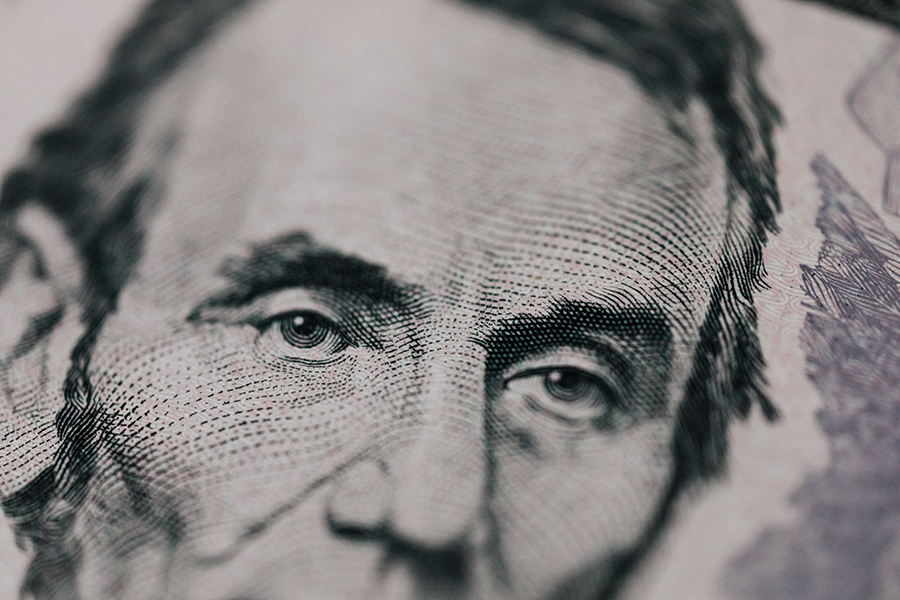Many parts of the economy have suffered no ill effects from Covid – the US government should restrain its largesses
One year after the emergence of covid as a threat to our daily existence, a peculiar narrative has taken hold whereby the undoubted turmoil of the past 12 months is being treated as a general economic catastrophe. The mismatch between rhetoric and reality is reflected in the degree of monetary and fiscal stimulus being enacted and promised for the future, while the expansion of government regulation over both commerce and private behaviour seems likely to far outlast the medical emergency.
All of the above may seem preferable to the bleak future that threatened to engulf us in March 2020, but what started as a slew of emergency measures designed to prevent a deflationary bust has been expanded to a programme that threatens to place us in the alternative hell of an inflationary boom. The inconvenience of daily staples being unavailable last spring is being replaced by an equally dramatic shortage of household and corporate goods, as surging demand meets the reality of logistical and manufacturing capacity that is already being overwhelmed by current spending.
“What started as a slew of emergency measures designed to prevent a deflationary bust has been expanded to a programme that threatens to place us in the alternative hell of an inflationary boom”
The essential problem is that the unprecedented collapse of activity within the leisure and travel industries is being treated as if it is a much broader collapse of activity. It is a little as if the state of the steel and coal industries in the early 1980s were used as a template for the entire economy. I do not wish to argue that these sectors be thrown to the wolves, but a series of targeted measures providing a reasonable safety net for those affected would not require the level of broad fiscal stimulus already enacted last year, let alone the latest package the Biden administration has bundled through Congress. Vast amounts of money are being channelled to portions of the economy that either have been largely untroubled by covid or may actually have benefited from the shifts in consumption that have taken place in its wake.
“The unprecedented collapse of activity within the leisure and travel industries is being treated as if it is a much broader collapse of activity”
Nor do financial markets require the continued largesse of the Federal Reserve, an institution that has become transfixed by the social goal of restoring full employment across the racial divide of the US. This is of course a laudable aim, but quite how purchasing large amounts of treasuries and MBS securities will help reverse the damage from social distancing is unclear. Monetary policy, especially asset purchases, had a key role to play a year ago in avoiding a financial market meltdown, but with equity markets at all-time highs, bond and equity issuance reaching record levels and an increasingly unruly SPAC (special purpose acquisition company) mania taking hold, piping more laughing gas into the party is hardly what is required.
As mentioned above, the boom in durable goods consumption already threatens to outstrip the global supply chain’s ability to fulfil it. It is as hard today to obtain a washing machine as it was to source toilet paper in April 2020. With the vaccination rollout highly likely to reduce social distancing regulation (as well as the actual behaviour followed by the general public), we would expect a resurgence of demand for the service sector goods that collapsed during 2020. Once again supply would seem to be a key issue, but as capacity provided by surviving entities comes back online, a very rapid re-employment of workers in these sectors can be expected. This should be much faster than a traditional V-shaped economic recovery, such as in 2009-11, because at the current time most other sectors boast healthy employment, rising wages and a very substantial pool of excess savings.
Economically 2021 started off on the front foot, and with another large stimulus package now being implemented, has the potential to far outstrip the current forecast of professional economists and the Federal Reserve. There are signs that financial markets are starting to sniff out this potential, with a significant shift of relative performance towards cyclical sectors, higher commodity prices and rising long-term bond yields. However, it has been several decades since the real economy has had a similar potential to surge to the upside, and it is unlikely that the opinion driving financial markets has the benefit of experience to understand the potential for disruption.
Older UK readers may recall the ‘Barber boom’ (as a young child when that was unfolding, I have a better memory of its dismal aftermath), or the milder ‘Lawson’ version that topped out at the end of the 1980s. In the US, the contemporaneous explosion of activity that accompanied the breaking of the Breton Woods agreement and the last few months of the Reagan administration come to mind. The 2021-22 period looks destined to write its own chapter in the economic and financial market history books and confound those not expecting it along the way.







